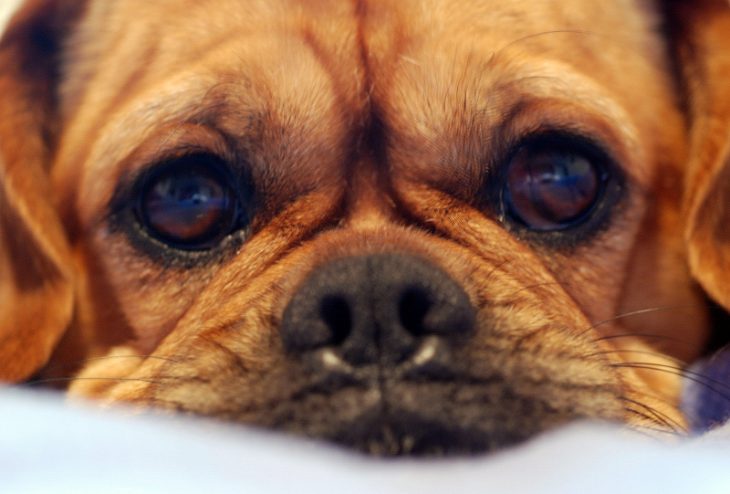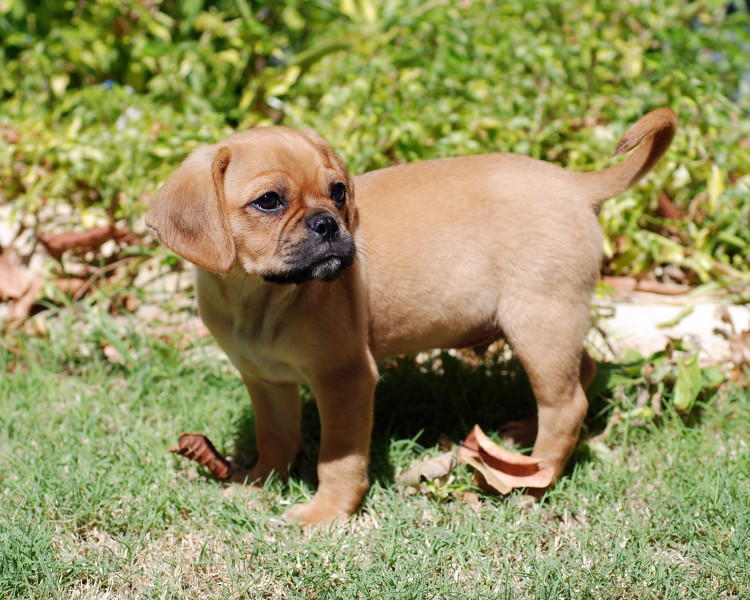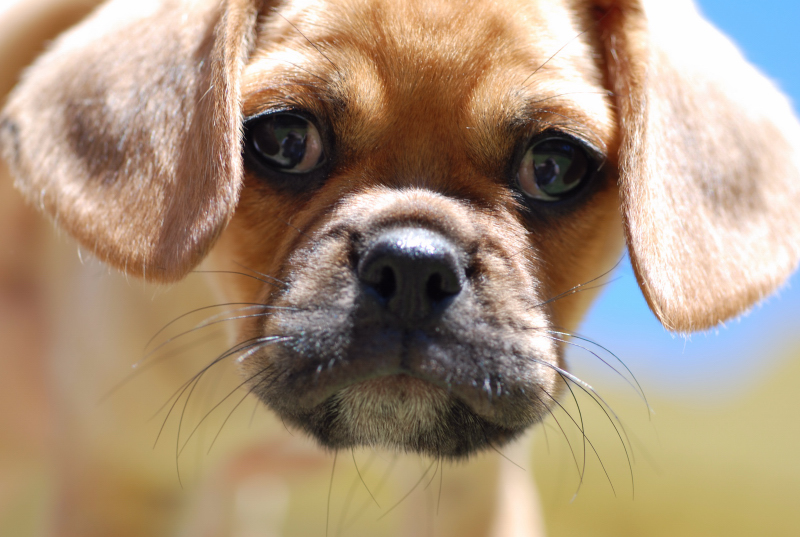
The Pugalier, a delightful hybrid breed, is the result of crossing a Pug with a Cavalier King Charles Spaniel. This charming and affectionate dog inherits the best traits from both parent breeds, making it an ideal companion for families and individuals alike. In this comprehensive article, we will dive into the world of Pugaliers, exploring their unique characteristics, temperament, care needs, and more. Get ready to discover the captivating world of these adorable Pug and Cavalier mixes.
History and Origin of the Pugalier
The Pugalier, as a hybrid breed, likely originated in recent decades as a deliberate cross between the Pug and Cavalier King Charles Spaniel. Breeders aimed to combine the best qualities of both breeds, resulting in a delightful companion with a mix of the Pug’s charming personality and the Cavalier’s gentle and affectionate nature.
Hybrids: The Pug
The Pug, with its distinctive wrinkled face and playful nature, has a rich history that dates back to ancient China. They were cherished companions of Chinese royalty and later found their way to Europe, where they gained popularity among the nobility and became fashionable pets.
Hybrids: The Cavalier King Charles Spaniel
The Cavalier King Charles Spaniel is a breed known for its elegance, grace, and friendly disposition. It originated in the United Kingdom and was favored by British nobility, including King Charles II, who adored these affectionate and loyal dogs.
Size
Pugaliers are typically small to medium-sized dogs. They usually stand between 10 to 14 inches (25 to 36 cm) tall at the shoulder and weigh between 10 to 20 pounds (4.5 to 9 kg).

Build
Pugaliers have a sturdy and compact build, similar to their Pug ancestors. They have a well-proportioned body, a broad chest, and a straight back.
Head
Pugaliers often have a round head with a short muzzle, similar to that of a Pug. Their expressive eyes are large and dark, and their ears can either be erect like the Pug or slightly longer and feathered like the Cavalier King Charles Spaniel.
Coat
The Pugalier’s coat is typically short, smooth, and glossy. They may inherit the Pug’s coat color variations, including fawn, black, or silver, often with distinct markings like a black mask on the face or white patches.
Tail
Pugaliers usually have a curled tail, reminiscent of the Pug’s curly tail, which adds to their charm and unique appearance.
Pugalier Temperament and Personality
Pugaliers are known for their friendly and affectionate nature, making them excellent companions for individuals and families alike. Moreover, Pugaliers are social dogs that generally get along well with people and other pets. They thrive on human companionship and enjoy being part of the family.
Nutrition
Choose high-quality dog food that contains essential nutrients, including protein, healthy fats, carbohydrates, vitamins, and minerals. Avoid feeding your Pugalier excessive amounts of treats or table scraps, as this can lead to weight gain and other health issues.
Exercise
Despite their small size, Pugaliers have moderate exercise needs. Daily walks, interactive play sessions, and mental stimulation activities are essential to keep them physically and mentally stimulated. Engage in activities that allow your Pugalier to burn off energy, such as playing fetch, participating in obedience training, or exploring new environments. However, avoid overexertion or intense exercise, especially in hot weather, as Pugaliers can be prone to heat sensitivity due to their brachycephalic (short-muzzled) nature.
Grooming
Pugaliers have a short, smooth coat that requires minimal grooming. Regular brushing helps remove loose hair and keeps their coat looking shiny and healthy. Check and clean your Pugalier’s ears regularly to prevent the buildup of wax and debris, which can lead to ear infections. Additionally, trim their nails as needed to prevent them from becoming too long and causing discomfort.
Veterinary Care
Regular veterinary check-ups are essential to ensure your Pugalier’s overall health and well-being. Schedule routine vaccinations, dental cleanings, and preventive treatments for fleas, ticks, and parasites as recommended by your veterinarian. Be attentive to any signs of health issues, such as respiratory difficulties, eye problems, skin irritations, or weight gain. Early detection and treatment can help prevent complications and ensure a long and healthy life for your Pugalier.
Training and Socialization for Pugaliers
Start training your Pugalier from an early age using positive reinforcement techniques, such as rewards, praise, and treats. Pugaliers respond well to gentle and consistent training methods. Make sure to socialize your Pugalier from a young age by exposing them to various people, animals, and environments. This helps them develop good manners, adaptability, and confidence. Introduce them to different sights, sounds, and experiences to prevent fear or anxiety in new situations.
Remember to be patient, consistent, and positive throughout the training process. Pugaliers thrive on positive reinforcement and will respond well to gentle guidance and encouragement.
Brachycephalic Airway Syndrome
Pugaliers, like Pugs, can have brachycephalic features that contribute to breathing difficulties. They may be prone to snoring, snorting, and respiratory distress, especially in hot weather or during intense exercise. It’s important to monitor their breathing and avoid situations that can exacerbate respiratory issues.
Eye Problems
Pugaliers can inherit eye conditions from their parent breeds, including cherry eye, dry eye, and progressive retinal atrophy (PRA). Regular eye examinations by a veterinarian are crucial to detect and manage any potential eye problems.
Dental Issues
Pugaliers, like many small breeds, are prone to dental problems such as tooth decay, gum disease, and tooth loss. Establish a regular dental care routine, including daily brushing and professional dental cleanings as recommended by your veterinarian.
Obesity
Pugaliers have a tendency to gain weight if not properly exercised or if overfed. Obesity can lead to various health issues, including joint problems, diabetes, and heart disease. Monitor your Pugalier’s weight, feed them a balanced diet, and provide regular exercise to maintain a healthy weight.
Allergies
Pugaliers may be prone to allergies, including food allergies, environmental allergies, and skin allergies. If you notice signs of allergies such as itching, redness, or recurrent ear infections, consult with your veterinarian for proper diagnosis and treatment options.

Conclusion
In conclusion, Pugaliers are delightful and affectionate companions that bring together the best of the Pug and Cavalier King Charles Spaniel breeds. With their playful nature, sociability, and adaptability, they make excellent family pets for individuals and households of all sizes. By providing proper care, training, and socialization, you can ensure a happy and fulfilling life for your Pugalier.
Remember to feed them a nutritious diet, provide regular exercise, grooming, and veterinary care, and invest time and effort into their training and socialization. By doing so, you will create a loving and harmonious bond with your Pugalier that will last a lifetime.
Frequently Asked Questions (FAQs)
Are Pugaliers hypoallergenic?
No, Pugaliers are not hypoallergenic. They have a short, shedding coat, and while they may produce fewer allergenic particles than some other breeds, they can still cause allergies in sensitive individuals.
How long do Pugaliers typically live?
On average, Pugaliers have a lifespan of around 10 to 14 years. With proper care, nutrition, and regular veterinary check-ups, some Pugaliers have been known to live even longer.
Do Pugaliers require a lot of exercise?
Pugaliers have moderate exercise needs. Daily walks, interactive play sessions, and mental stimulation activities are essential to keep them physically and mentally healthy. However, they are not high-energy dogs and can adapt well to different lifestyles, including apartment living, as long as their exercise needs are met.
Are Pugaliers good with children?
Yes, Pugaliers can be great companions for children. They are generally friendly, sociable, and patient, making them suitable for families with kids. However, as with any dog, supervision and teaching children how to interact respectfully with dogs is important to ensure the safety and well-being of both the child and the dog.
Can Pugaliers be left alone for long periods?
Pugaliers are social dogs that thrive on human companionship. While they can tolerate being alone for short periods, it’s not advisable to leave them alone for extended periods of time. They may become anxious or develop separation anxiety if left alone for too long. If you have to be away for extended periods, consider arranging for a pet sitter, doggy daycare, or asking a trusted friend or family member to check in on your Pugalier.
Was this page helpful?
Our commitment to delivering trustworthy and engaging content is at the heart of what we do. Each fact on our site is contributed by real users like you, bringing a wealth of diverse insights and information. To ensure the highest standards of accuracy and reliability, our dedicated editors meticulously review each submission. This process guarantees that the facts we share are not only fascinating but also credible. Trust in our commitment to quality and authenticity as you explore and learn with us.
